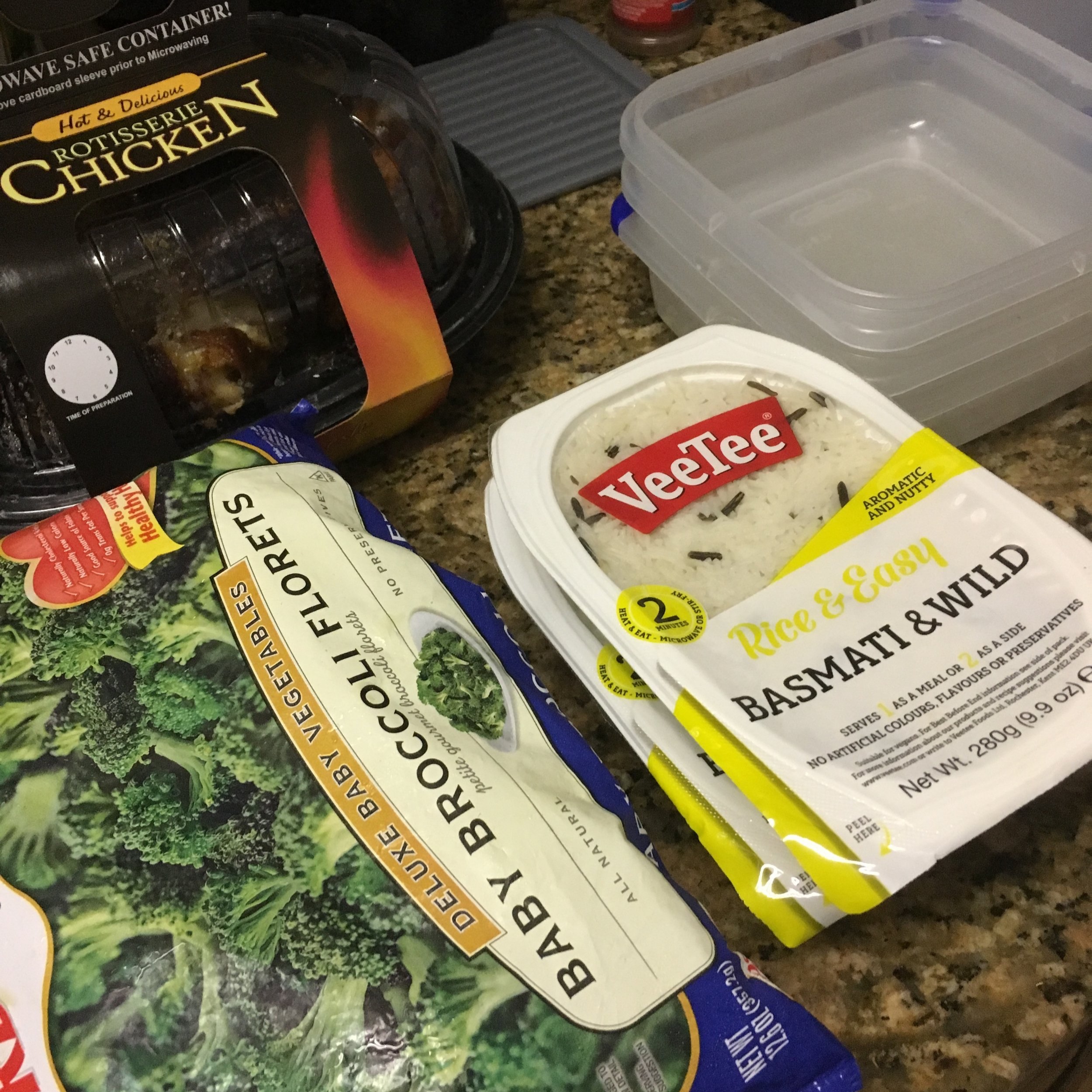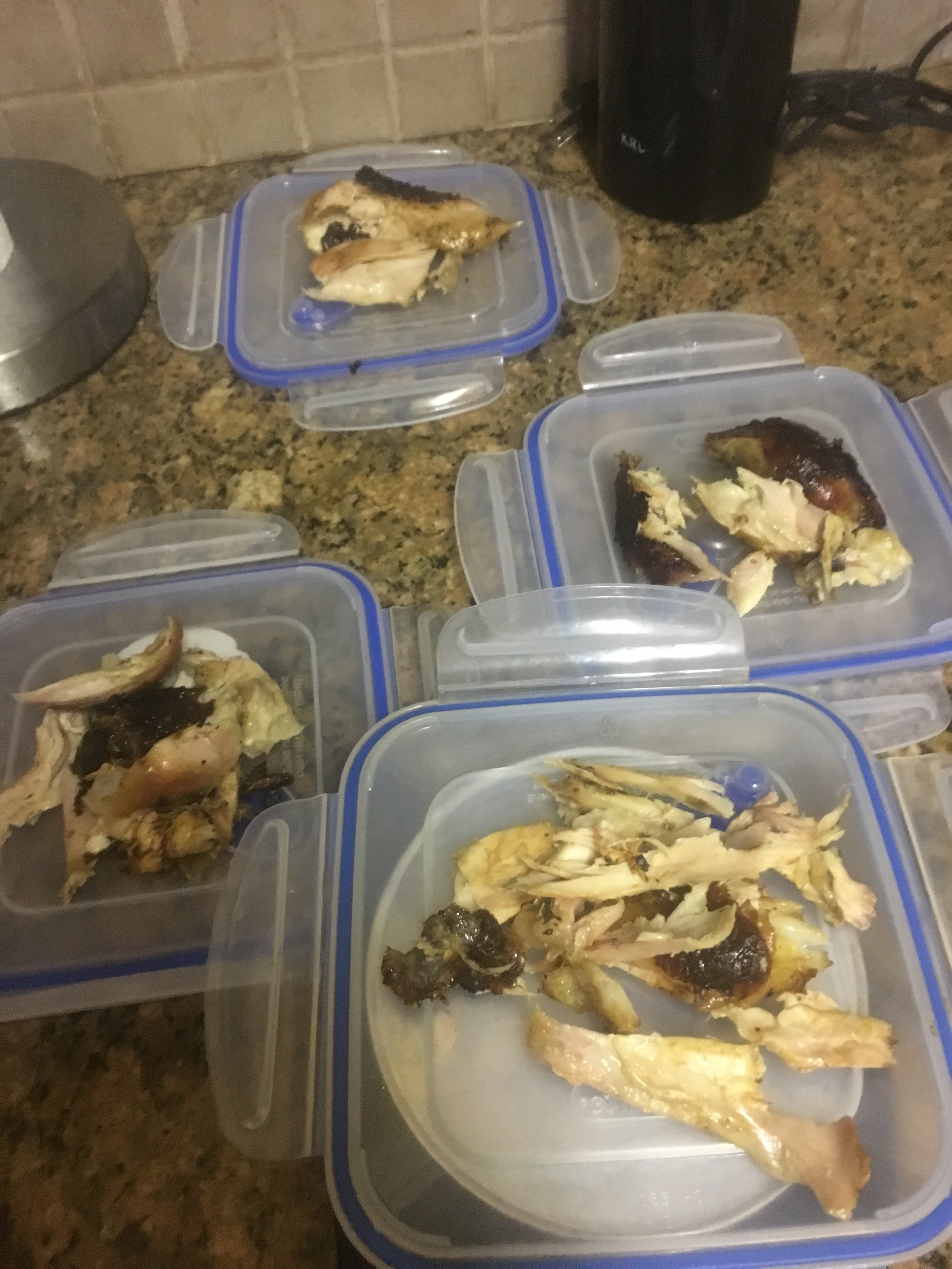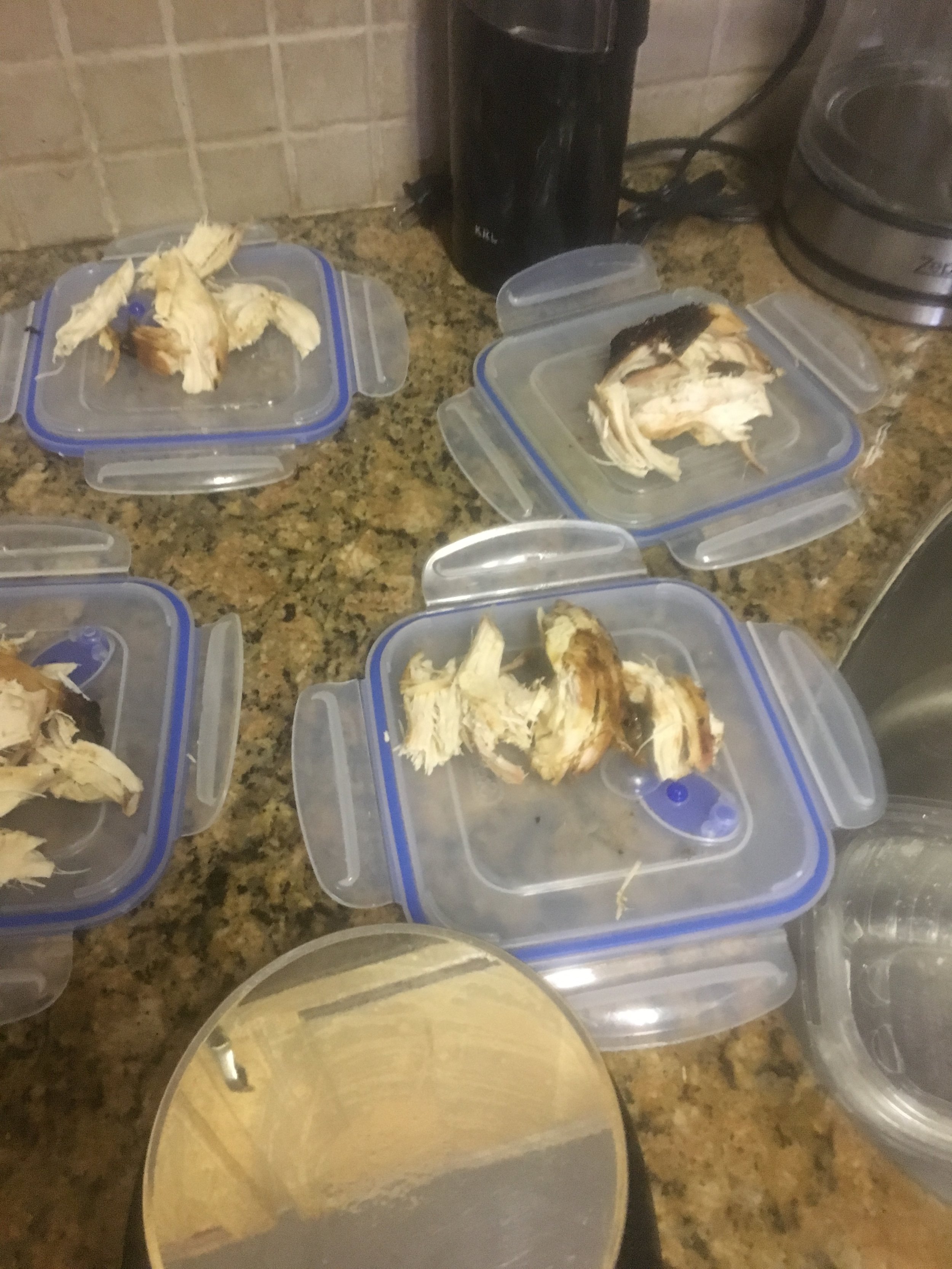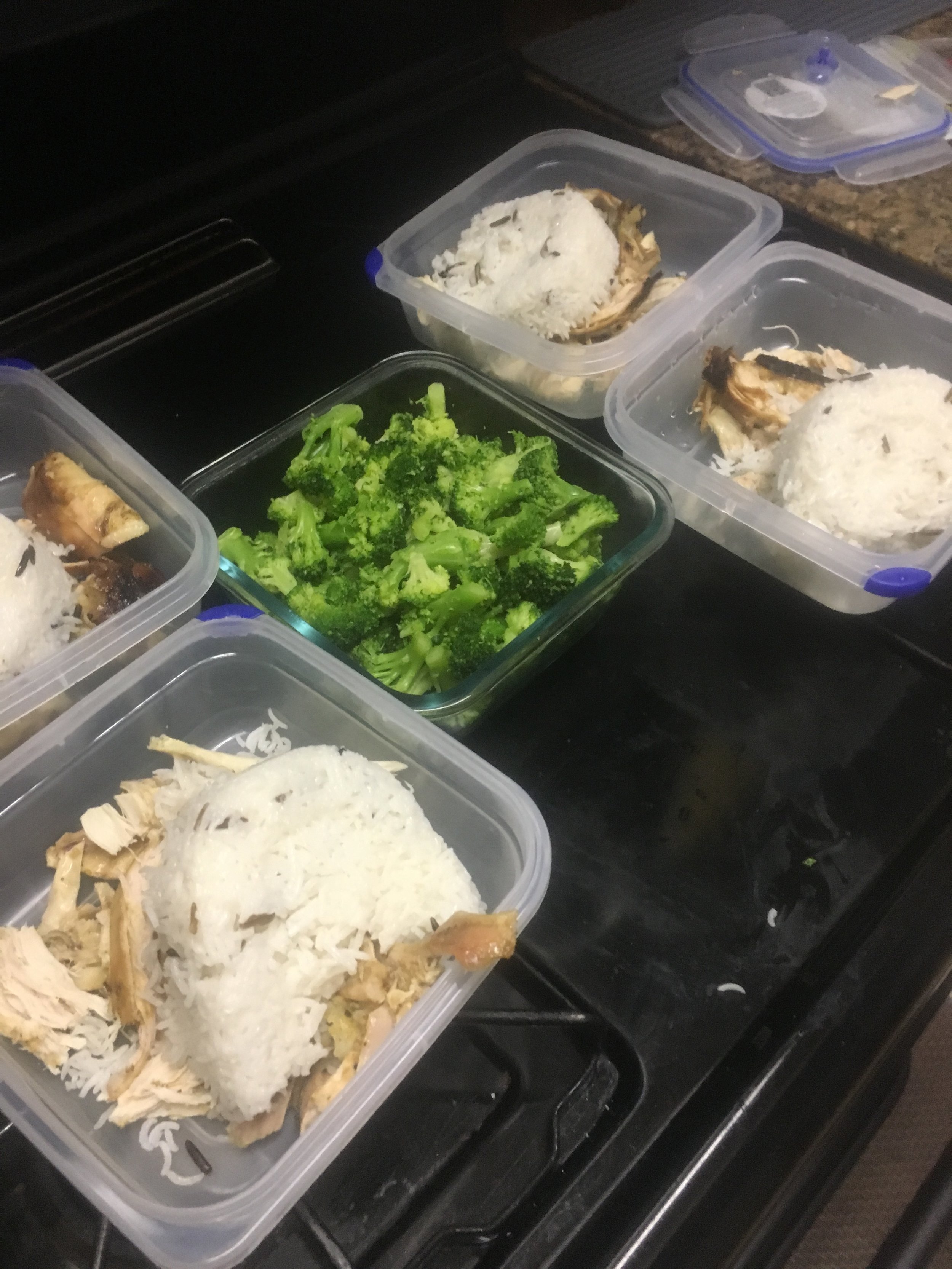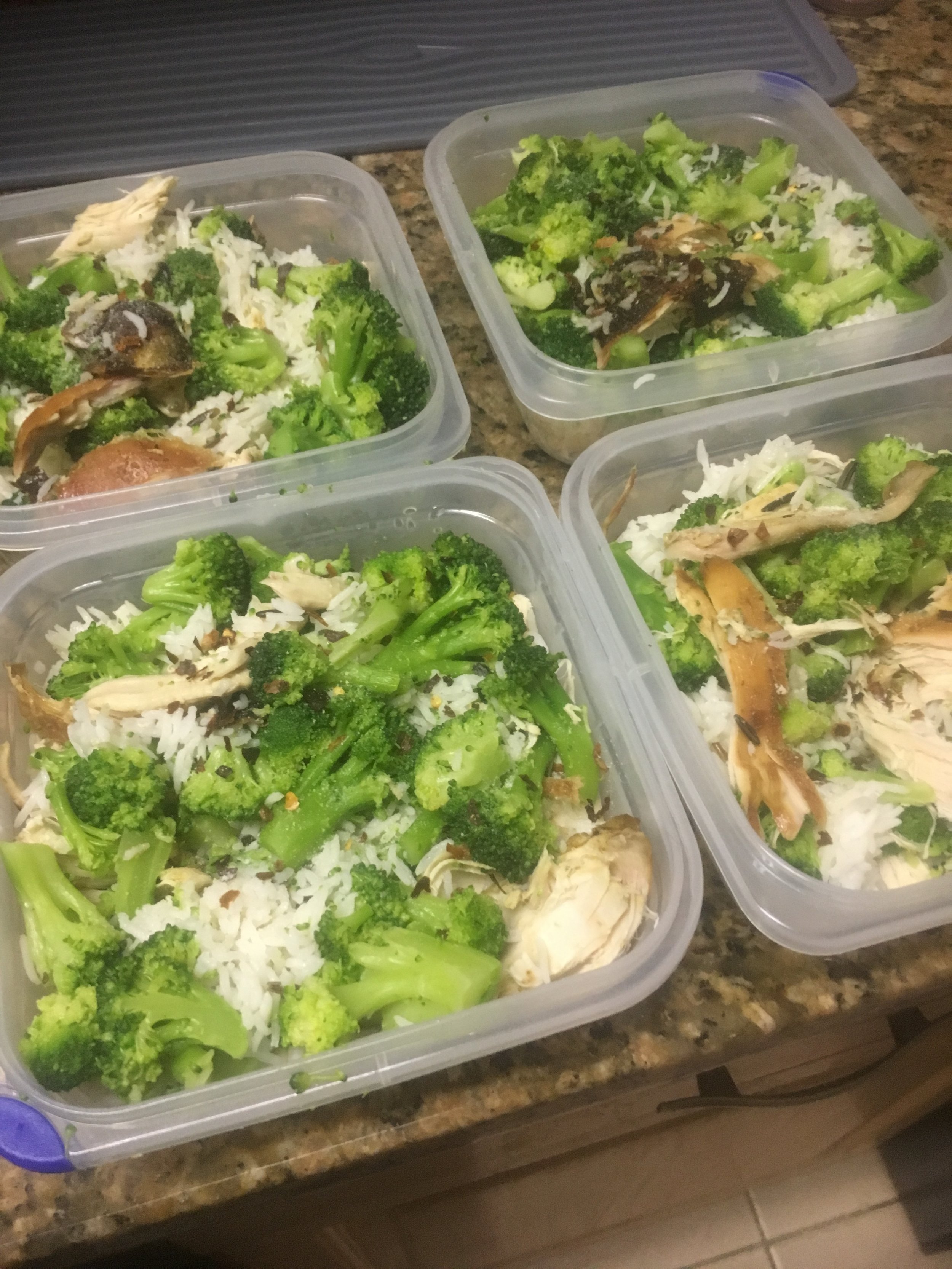Easy Meal Prep Under 10 min and $20
/Meal prep is one of the less glamorous elements of your fitness journey. Especially if you are new to taking control of your nutrition, making pounds of chicken, sautéing vegetables, while you burn rice to the bottom of the pot can seem like a kitchen destroying Sisyphean task. Instead of letting this take the spirit out of you I am going to provide some easy meal prep ideas in a series of blogs that will soon be a e-pamphlet.
First Question
“What level of coaching are you at?” Nutrition coaching is often divided into three levels of intensity and detail. Most people will never need to be at level 3, unless you plan to compete in bodybuilding or physique. Even then though most advanced athletes/dieters cannot realistically stay at level 3 without psychological and/or physical burnout. In this level everything is taken into account. You are even measuring asparagus spears, nothing is eaten that you do not measure or weigh first. Also, a level 3 trainee is most likely timing their meals around their workouts for optimized muscle growth or fat loss. An example of detail the majority of that day’s carbs would be eaten in a three hour window arounds workouts. Whey protein would be consumed following a workout because of its quick absorption rate and casein taken prior to bed because of its slow release. For most individuals you will never need to be at level 3.
Myself after about two months of level 2 intensity and one month at level 3.
Level 2, I will define as you are measuring calories but you are not striving for the same level of accuracy. Also, timing is not really an issue. A note on accuracy, most food labels are estimated to only be within the 20-30% accurate range to begin with. For a food item to be close to 100% accurate every item would need to be placed in a bomb calorimeter.
Level 1 is simply basic consciousness of what you are eating. At level 1 you simply use your fist to measure protein, palm for carbs & vegetables, and your thumb to estimate fat.
Three common items less than 20 dollars. Also, I recommend purchasing broccoli florets and not cuts.
Four Meals Under Ten Minutes
For the level 3 trainee: divide the chicken into white meat and dark since you will enter them separately into your tracking app. Even if you are trying to cut I would recommend keeping the skin on at least the dark meat because of the vitamins. Next weigh four equal portions of each. Microwave the pre-packaged rice, use a spatula to divide each two serving packs into individual portions. Microwave your vegetables in a glass container and then divide those up. For the level two trainee, simply find in My Fitness Pal, or your chosen app, an entire rotisserie chicken then enter the serving as 0.25 of the whole chicken. The rice and vegetable set up is the same. If you are a level 1 trainee simply rip, shred the chicken up and use your eyeballs.
Cost Effective
This approach is not a only a great way for you to track your nutrition, but you can save considerable money. Especially if like me you live in New York City. I purchased all these items for under twenty bucks. The chicken was $7.99, two pre-cooked rice packs for $2.50 a piece, and two bags of broccoli for $2.49 a piece. I made four filling meals which in NYC would easily run $10-15 a piece. I chose not use oil on the rice and to keep the skin on the chicken for my fat calories. That being said each meal was still around 500 calories total. If you liked this article and would value more similar content please leave a comment below. Best of luck on your journey whatever your goals are. It will not happen overnight but probably will not take as long you think either. Be patient. strive to find satisfaction in the challenge and process.
“Patience is not simply the ability to wait, but rather how we behave while we’re waiting. ”
Note using the lids for each container to make it easier to measure and divide the portions, the finished product (far right).



